Battery Electric Vehicle Charging Technologies
There are two main categories of charging technologies: conductive and inductive (wireless). Conductive charging can be further classified by the type of current being used within the charger: alternating current (AC) and direct current (DC). Sometimes referred to as Direct Current Fast Charging (DCFC), DC chargers generally provide higher charging power compared to AC counterparts. A summary of U.S. charger types and their power ranges are presented in Figure 1. Charger types are generally not interoperable. An exception is the SAE J1772/CCS charger combo, whose outlet can accept either J1772 or CCS. Adapters are available for Tesla owners to utilize SAE J1772, CHAdeMO, and CCS.
Figure 1 – Power Output Range of Different Charger Types Available in the U.S.
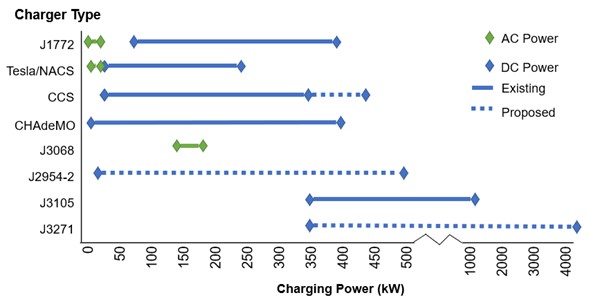
Charger technologies vary by region and application. In the U.S., DC charging that are marketed to residential LDV charging provide power up to about 7-10 kW. Maximum power supply for LDV public stations and commercial MD/HDV charging facilities can range between 30 kW to 350 kW. Newer standards are expected to exceed 350 kW power output, with megawatt charging (e.g., J3271) anticipated in the next couple years. See Figures 2 and 3 for a timeline of charger development.
Figure 2 – Evolution of Standardized and Proprietary Chargers
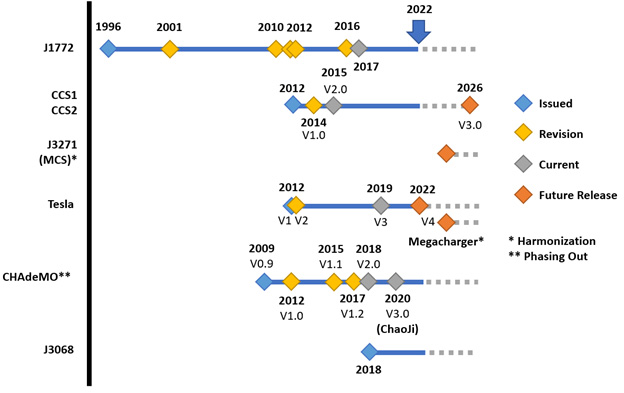
Figure 3 – Evolution of Standardized and Proprietary Chargers
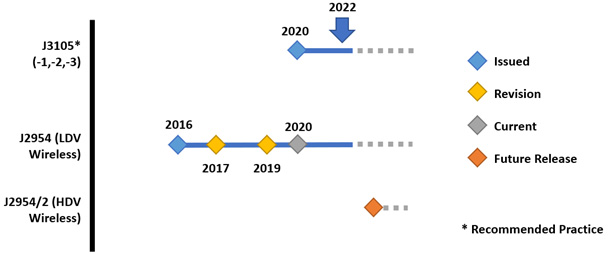
Tables 1 and 2 provide an overview of the charger specifications available worldwide.
Table 1 – Predominantly AC BEV Charging Connector Specifications
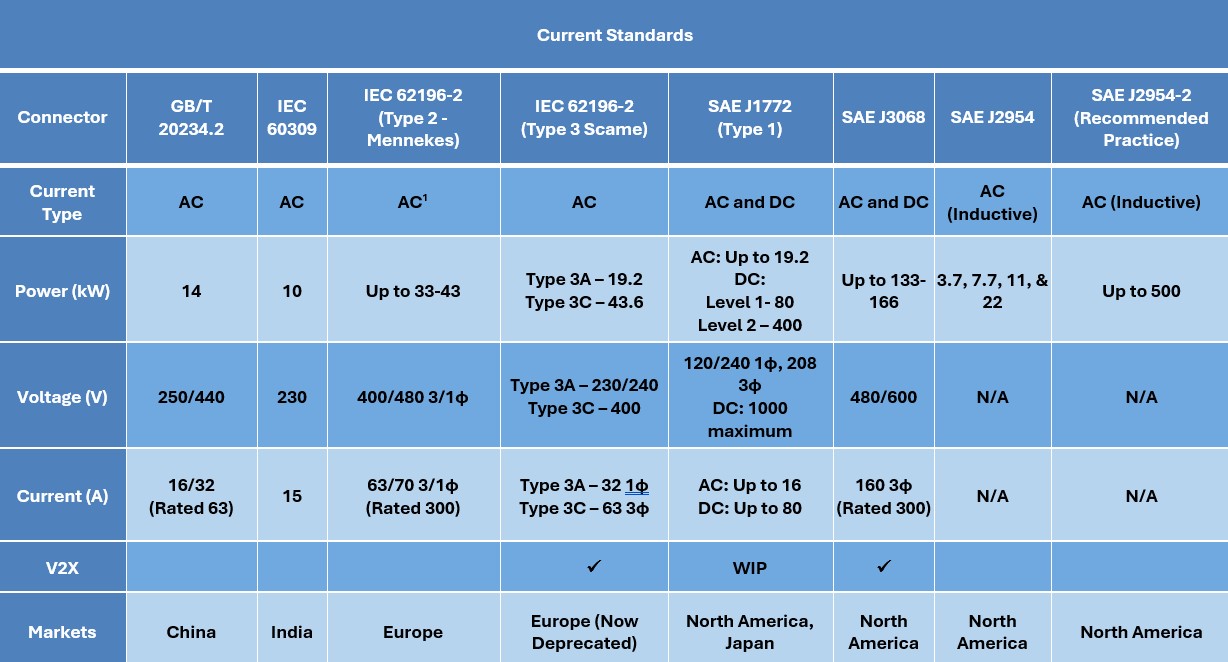
✔ Vehicle-to-Grid Capable
1 DC power transfer mode only implemented in Europe at Tesla Supercharger stations.
Table 2 - Predominantly DC BEV Charging Connector Specifications and Standards in Development
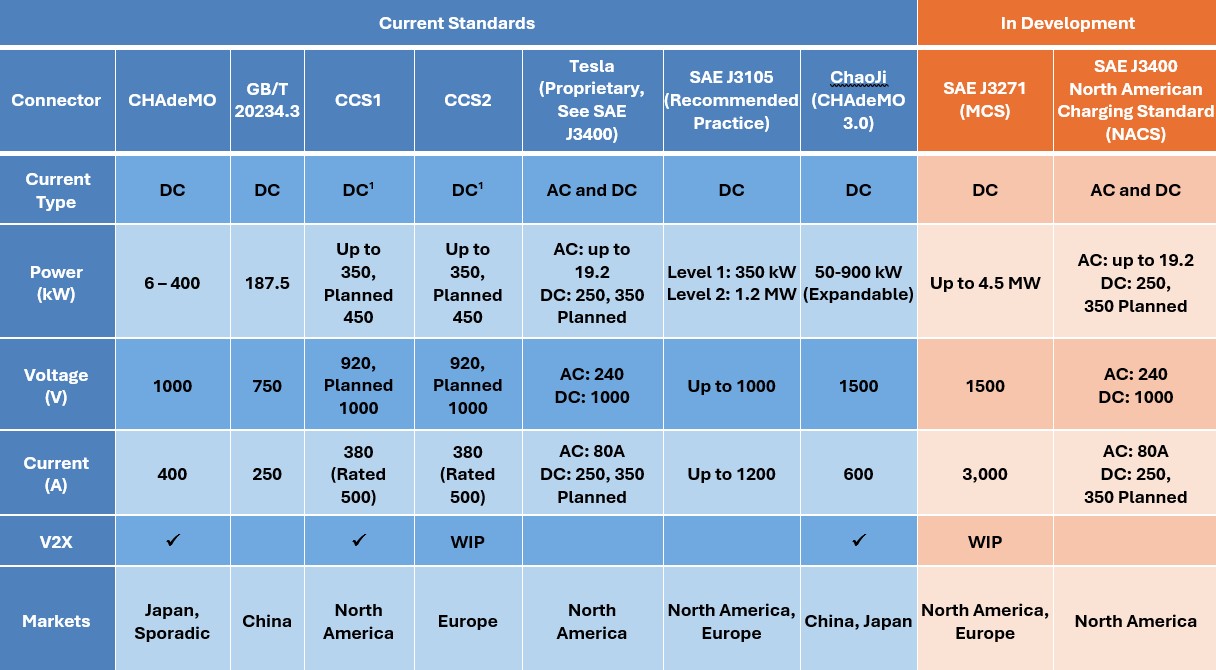
✔ Vehicle-to-Grid Capable, WIP = Work in Progress, MCS = Megawatt Charging System
1 CCS1 and CCS2 ports accept Type 1 and 2 AC chargers, respectively.
Note: NACS, which is a standard modeled after the Tesla proprietary hardware, is in development.
